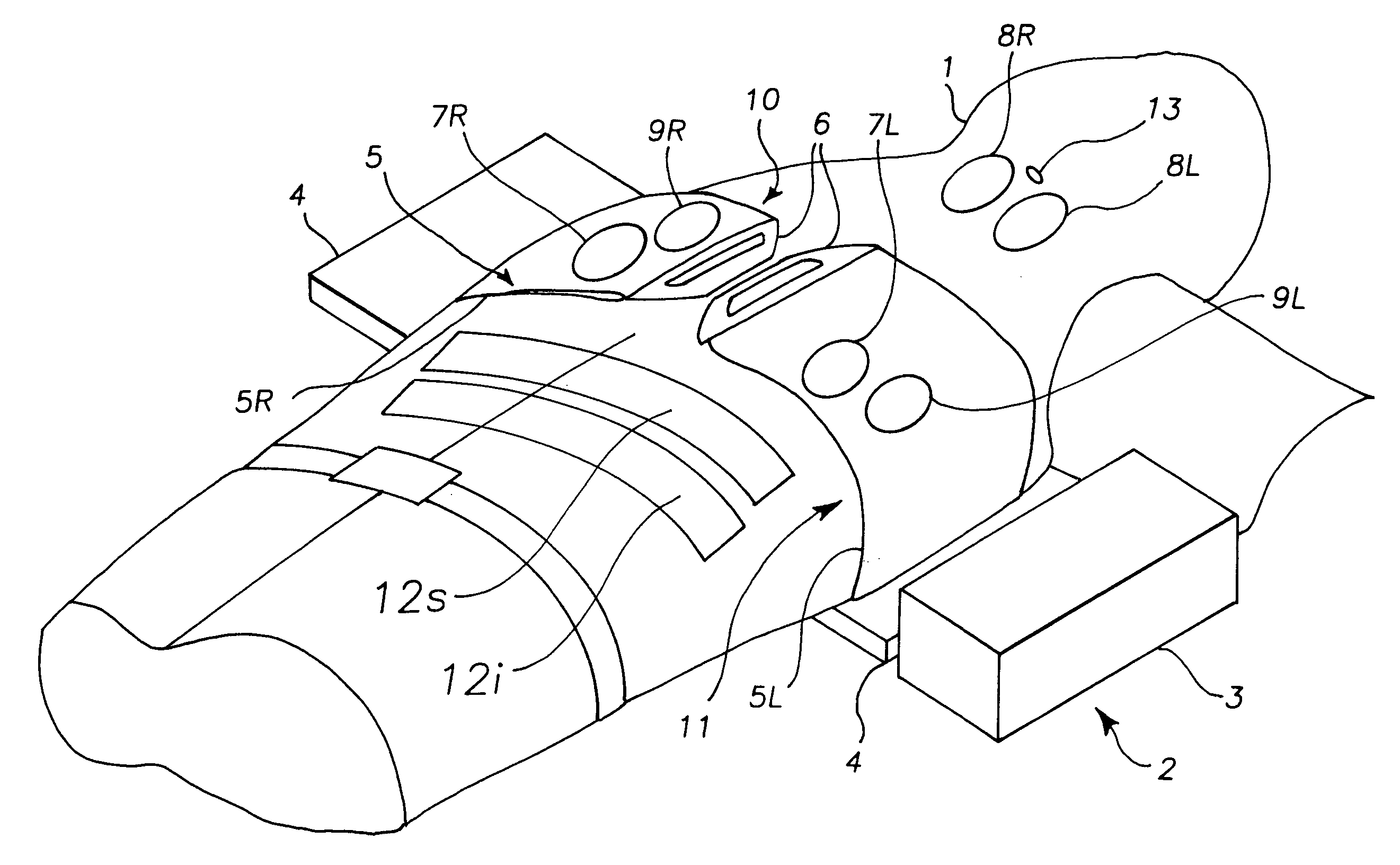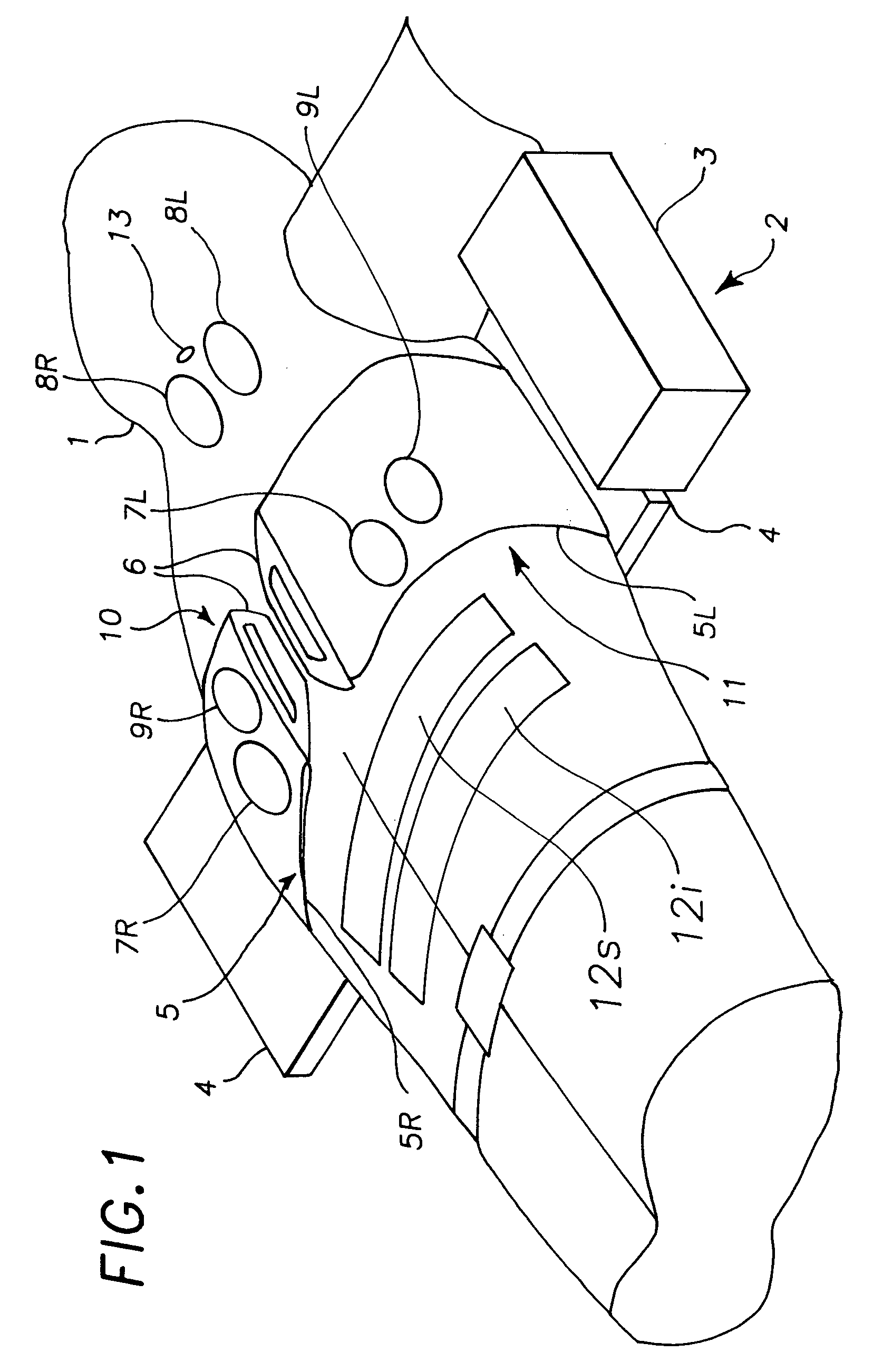Chest compression device with electro-stimulation
a compression device and electro-stimulation technology, applied in the field of resuscitation of cardiac arrest victims, can solve the problems of difficult if not impossible to and the brain damage of people suffering cardiac arrest will soon be affected, and experienced paramedics cannot maintain adequate chest compression for more than a few minutes
- Summary
- Abstract
- Description
- Claims
- Application Information
AI Technical Summary
Problems solved by technology
Method used
Image
Examples
Embodiment Construction
[0018] FIG. 1 shows the system mounted on a patient 1 and ready for use. The chest compression subsystem 2 comprises the motor box 3, the belt cartridge 4, and the compression belt 5 with left and right portions 5L and 5R. The belt is fastened around the patient with fasteners 6, which may be buckles, Velcro.RTM. hook and loop fasteners or other fasteners with sensors to sense when the belt is fastened. Ventilation electrodes 7L and 7R are mounted on the belts in the area of the lower chest, over the diaphragm, placed bilaterally. Bipolar electrodes 8L and 8R (or electrode pairs) may also be placed on the neck, bilaterally, to stimulate the phrenic nerve which courses downwardly through the neck. Defibrillation electrodes 9R and 9L are placed in the right sternum parasaggital location 10 and left rib medial location 11, and they may also be located below the patient, on the spine between the shoulder blades, and on the center of the chest, respectively. These electrodes are also use...
PUM
 Login to View More
Login to View More Abstract
Description
Claims
Application Information
 Login to View More
Login to View More - R&D
- Intellectual Property
- Life Sciences
- Materials
- Tech Scout
- Unparalleled Data Quality
- Higher Quality Content
- 60% Fewer Hallucinations
Browse by: Latest US Patents, China's latest patents, Technical Efficacy Thesaurus, Application Domain, Technology Topic, Popular Technical Reports.
© 2025 PatSnap. All rights reserved.Legal|Privacy policy|Modern Slavery Act Transparency Statement|Sitemap|About US| Contact US: help@patsnap.com



